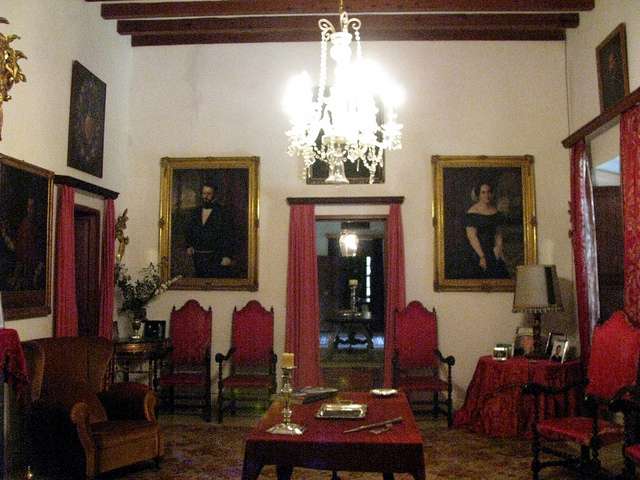Interestingly enough, after spending so many days in and near the Tramuntana Mountain range, Port d’Alcudia with its flat topography, straight main street and modern architecture, reminded me more of Florida than of the Spanish islands. Finally, I had reached my hotel, parked my vehicle right out front and obtained the keys at reception. The hotel was decent enough, but the unit was very small, a very compact bachelor apartment with a mini-kitchen.

A huge selection of olives in the market of Inca
This self-catering unit was perfect for me in allowing me to look after my own food preparation needs in the next few days. The only drawback was the northeast facing location which had me facing out into a tree above the parking lot without any view or sunshine whatsoever. This was a huge contrast to the great location of my last apartment unit in Palmanova where I had had a perfect view over the Mediterranean from my large terrace.

My spartanic yet functional bachelor apartment at the Eden Alcudia
But never mind, the accommodations were fine and I was not planning to spend much time in the unit anyway. I headed downstairs into the lobby and out into the attractive back garden which had a great swimming pool and some grassy rest areas. Families with small children were relaxing by the pool and enjoying a sunny afternoon.

I walked through the gardens and out the back towards the sea. Steps away from the hotel was the Mediterranean, more specifically the Bay of Alcudia, a very wide bay that is capped off by a chain of medium-height mountains on the northern and southern side. I walked a little bit further north in search of a downtown area with cafes and restaurants, but I was unable to locate an older downtown core. Port d’Alcudia indeed seemed to be much more a town of relatively recent tourist developments, rather than a historically grown town.

A view across the Bay of Alcudia from outside my hotel
In search of a more historic place, I hopped into my car and drove a few kilometers north to Alcudia, a truly historic town of 15,000 people that is surrounded by 14th century walls. The town was already settled by the Phoenicians, and after the Roman conquest, the town of Pollentia, located just outside of today’s city walls, actually became the capital of Mallorca from the 2nd century AD onwards. In 456 AD the town was finally destroyed by the Vandals, but around 800, the Moors built a fortress here which they called “Al-Kudia”, which means “the hill”. Any history buff will truly enjoy this city.

La Casa Consistorial, the city hall of Alcudia
I parked my car outside the fortification walls and entered the town on a narrow cobble-stoned street. Every thing was quiet, hardly a person could be seen until I reached the main square with the Casa Consistorial, the city hall, which dates back to 1523 AD. Turning left I walked up the town’s main street which features a large number of shops, boutiques, cafés and restaurants.

View from one of the historic city gates of Alcudia
Many of the stores were closed as it was siesta time. In Spain and other southern countries you always have to watch out for the mid-day rest period that is intended to shelter the locals from the scorching noon-time sun. Here, siesta appeared to be scheduled form 1 to 4 pm, and some of the stores had indeed closed their doors.

On the left: the medieval fortification wall of Alcudia
One of the main sights in Alcudia is the Gothic church of Sant Jaume which dates back to the 13th century. It was closed this afternoon so I was unable to have a look at the interior, so I continued my stroll and happened to come across the old medieval fortification walls, a portion of which has been made accessible to visitors through stairs and a walkway on top of the walls. The stairs were fairly steep to get up, but the walk on top of the fortification walls provided me with a great view of the orange tiled rooftops of the town.

The rooftops of Alcudia from the top of the fortification wall
I then drove through the eastern part of town into a residential area next to the water where the wind was absolutely howling. Continuing my drive further north along the Bay of Pollença I stopped to admire dozens of kite-surfers that were plying the waters, some of them lifting off high in the air and flying good stretches before they would come crashing back down on the water. The wide Bay of Pollença is one of Mallorca’s most popular destinations for kite-surfers.

Kitesurfers in the Bay of Pollença
I spent the evening in Port de Pollença, a scenic town at the north end of the Bay of Pollença, which has a great waterfront promenade and long sandy beach lined by palm trees. As the sun started to set I made a quick stop at Cala San Vicenç, a pretty village on the north coast just a few kilometres from Pollença before I headed back to my hotel where I enjoyed a home-made dinner on the balcony of my unit. After watching some French Open tennis on television, I went to bed early to get ready for a long day of explorations tomorrow.

Cala San Vicenç, a scenic village on the northern coast of Mallorca




